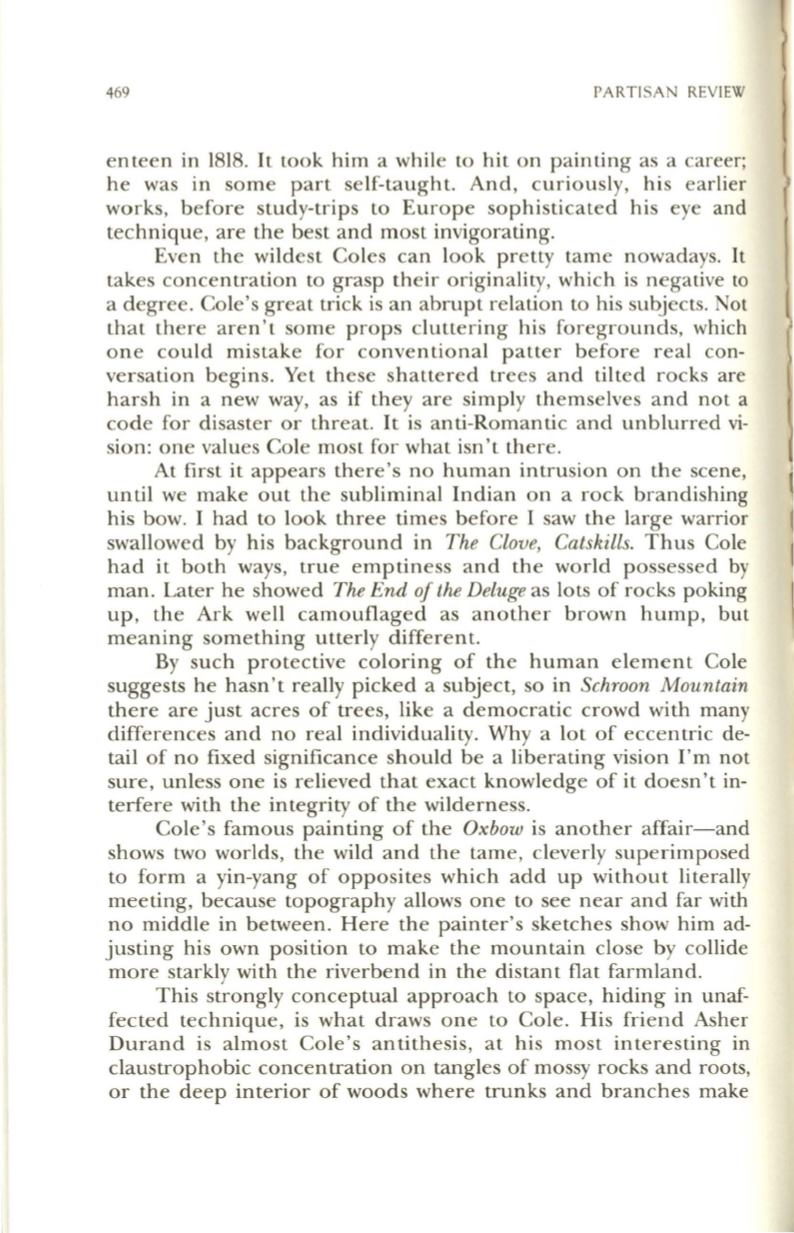
469
PARTISAN REVIEW
enteen in 1818. It took him a while to hit on painting as a career;
he was in some part self-taught. And, curiously, his earlier
works, before study-trips to Europe sophisticated his eye and
technique, are the best and most invigorating.
Even the wildest Coles can look pretty tame nowadays. It
takes concentration to grasp their originality, which is negative to
a degree. Cole's great trick is an abrupt relation to his subjects. Not
that there aren't some props cluttering his foregrounds, which
one could mistake for conventional patter before real con–
versation begins. Yet these shattered trees and tilted rocks are
harsh in a new way, as if they are simply themselves and not a
code for disaster or threat. It is anti-Romantic and unblurred
vi–
sion: one values Cole most for what isn't there .
At first it appears there's no human intrusion on the scene,
until we make out the subliminal Indian on a rock brandishing
his bow. I had to look three times before I saw the large warrior
swallowed by his background in
The Clove, Catskills.
Thus Cole
had it both ways, true emptiness and the world possessed by
man. Later he showed
The End of the Deluge
as lots of rocks poking
up, the Ark well camouflaged as another brown hump, but
meaning something utterly different.
By such protective coloring of the human element Cole
suggests he hasn't really picked a subject, so in
Schroon Mountain
there are just acres of trees, like a democratic crowd with many
differences and no real individuality. Why a lot of eccentric de–
tail of no fixed significance should be a liberating vision I'm not
sure, unless one is relieved that exact knowledge of it doesn't in–
terfere with the integrity of the wilderness.
Cole's famous painting of the
Oxbow
is another affair-and
shows two worlds, the wild and the tame, cleverly superimposed
to form a yin-yang of opposites which add up without literally
meeting, because topography allows one to see near and far with
no middle in between. Here the painter's sketches show him ad–
justing his own position to make the mountain close by collide
more starkly with the riverbend in the distant flat farmland.
This strongly conceptual approach to space, hiding in unaf–
fected technique, is what draws one to Cole. His friend Asher
Durand is almost Cole's antithesis, at his most interesting in
claustrophobic concentration on tangles of mossy rocks and roots,
or the deep interior of woods where trunks and branches make


